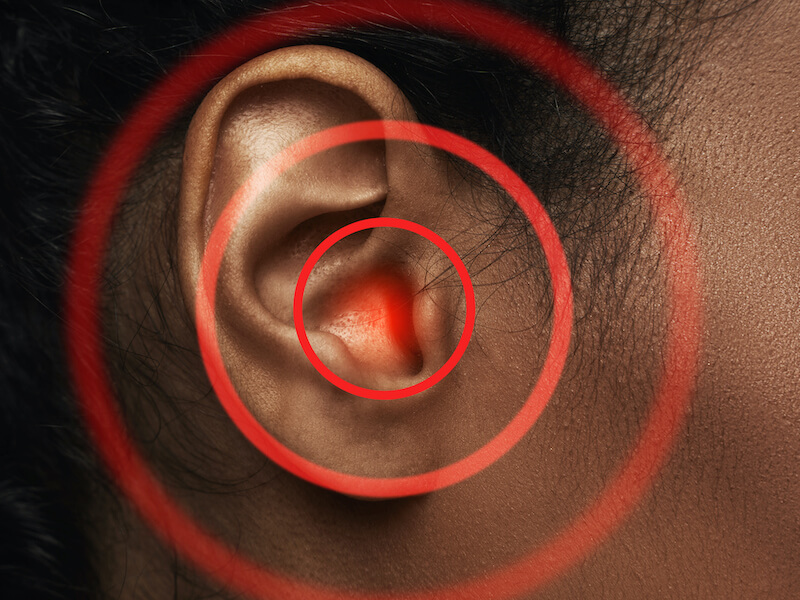Tinnitus is nothing new. But maybe it’s new to you, like a loud used car you can’t return. Usually, though not always, tinnitus presents as an incessant buzzing or ringing in the ears. Sometimes the sound is quite intense. Symptoms vary considerably, but here’s the point: if tinnitus is bothering you, you may be looking for some new ways to manage your symptoms.
In that, you’re in luck because while tinnitus does not yet have a universal cure, there are a few novel therapies that can help you manage symptoms. Some of those therapies even involve your tongue. (Look, it makes sense. Just keep reading.)
The newest way to manage tinnitus
Arguably the most novel tinnitus treatment to hit our radar does indeed offer quite a bit of promise, even if it sounds a little odd at first. This device, developed at the Trinity College School of Medicine in Dublin, stimulates both the ear (which is expected) and the tongue (which is less expected… unless you read the introduction, in which case you were likely prepared). Technically, it’s called bi-modal neuromodulation.
According to the first tests of this device, the results were pretty striking. Most people underwent treatments for a duration of twelve weeks or so. Those same people noticed a significant reduction in their tinnitus symptoms–and the results lasted up to twelve months.
There are still many questions (mostly about the tongue, but look–it has to do with how sound waves are transmitted through your body; it makes sense, it really does, and it’s backed up by research). And it’s not entirely clear yet how this device, once approved, will be deployed.
How this tech might help manage tinnitus in the near future
Here are a couple of theories of how this innovation might be used:
Temporary device: Assuming that this novel treatment passes trials, we will likely encounter bi-modal neuromodulation as a kind of device. Maybe it will look like hearing aids. Maybe it’ll look totally different. But, ideally, it would be something you could stick in your ears for a few weeks and successfully manage your tinnitus symptoms.
Inpatient procedure: Before it becomes miniaturized and turned into a tiny device, we will likely see larger bi-modal neuromodulation devices in hearing specialists’ offices. The idea would be that you go in, get your treatment, and leave. Over time, this could help diminish the symptoms of your tinnitus.
Surgically implanted device: Many surgically implanted medical devices already exist, and they serve to ameliorate a wide variety of conditions, from chronic back pain to nervous system disorders. It’s conceivable that the next (smaller) phase of this device could be surgically implanted to provide permanent relief from tinnitus symptoms. This would likely be reserved for the most severe or chronic cases. The benefit is that once the device is implanted, you’ll seldom have to think about it again.
What can I do now to get tinnitus relief?
Of course, it takes years for devices to work their way from research and development to patient availability. So maybe you’re curious about what you can do now to help manage your tinnitus. Luckily, there are some newer tinnitus management devices on the market today. And one of the best new ways to manage tinnitus is something you’ve likely already heard of: your hearing aid.
Here’s how it works:
Your hearing aid can give you something else to listen to. One reason why tinnitus becomes more noticeable as your hearing wanes is that ringing is the only thing that stays loud while everything else gets quieter. A hearing aid can boost the volume on the rest of the audio spectrum. That doesn’t change the volume of your tinnitus, but it could make the ringing less noticeable.
Your hearing aid can mask the sound. If your hearing loss is relatively mild, then a masking device may be the best way to treat your symptoms. A masking device essentially looks like a hearing aid. And many hearing aids can be augmented with masking technology. This technology will emit sounds designed to mask your tinnitus symptoms. Sometimes this will be a tone. In other cases, it might be some white noise–whatever is going to best hide the humming in your ears.
Innovative new devices at every turn
This is, of course, just the beginning. Your hearing specialist will have a better idea of what devices will work best for your tinnitus. The exact approach will vary depending on the nature of your tinnitus and the therapies available. But the goal is the same: giving you peace of mind and letting you live your life to the fullest.



